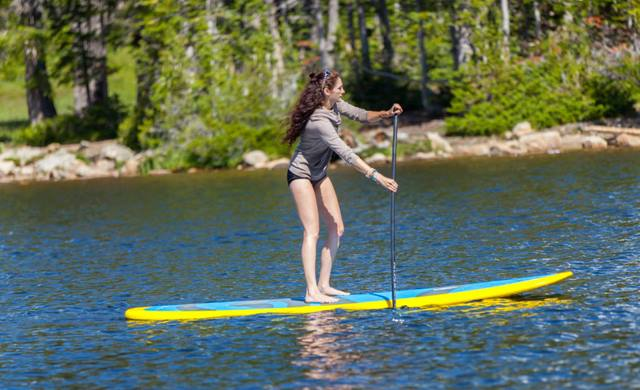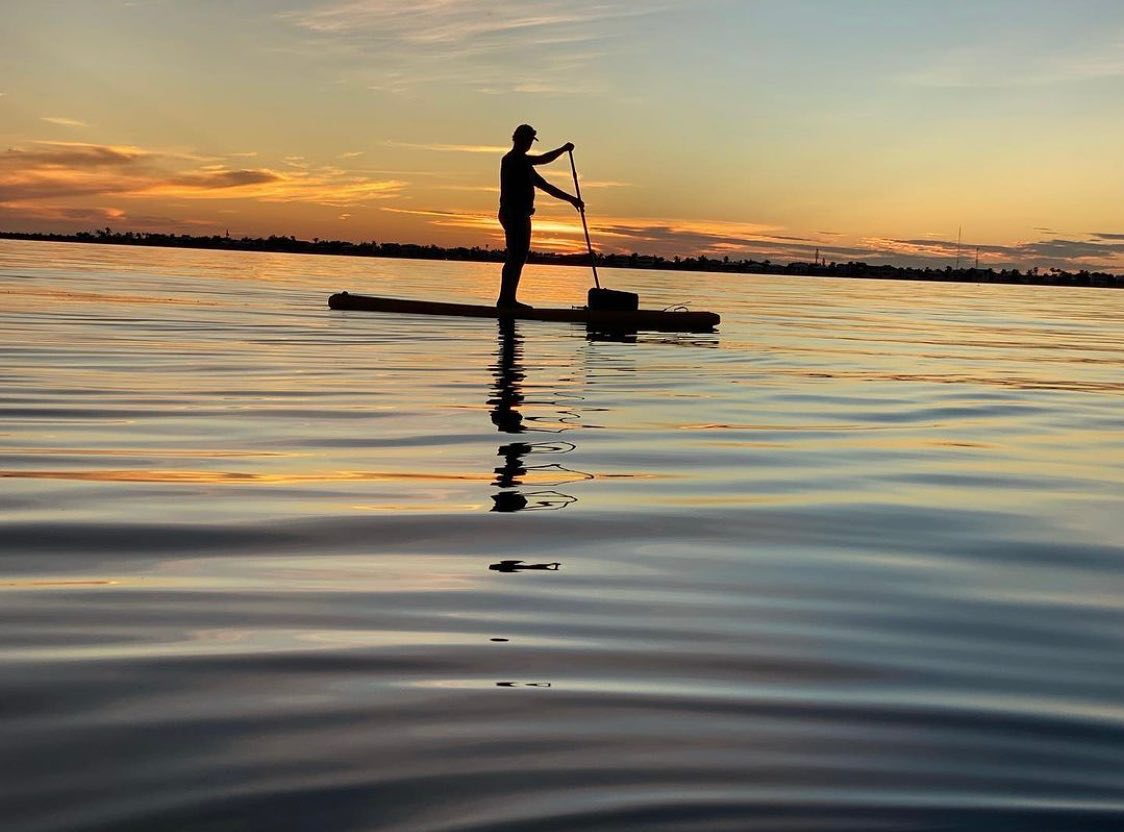
SUPer Strokes: A Guide to Maximizing Your Paddle Board Performance
Stand-up paddleboarding (SUP) combines the thrill of water sports with a full-body workout, offering enthusiasts a unique way to connect with nature. Whether you're navigating serene lakes on an inflatable paddle board or slicing through ocean waves on a solid board, mastering your paddle stroke is key to unlocking the full potential of your SUP experience. Let's dive into strategies that will refine your technique and enhance your performance across all types of paddle boards.
Key Highlights
- Understanding Your Gear: The impact of board and paddle type on performance.
- Paddle Stroke Fundamentals: Importance of correct paddle positioning and hand placement.
- Optimal Body Posture for Paddling: How stance affects stability and power.
- Mastering the Forward Stroke: Techniques for efficient propulsion.
- Advanced Strokes and Maneuvering: Incorporating the backward and sweep strokes for control and precision.
- Enhancing Stroke Rate and Core Strength: Strategies for increasing speed and endurance.
- Improving Balance for Better Paddling: Exercises and drills to enhance stability on the board.
- Choosing the Right Equipment: Tips for selecting paddles and boards suited to your skill level and paddling conditions.
Gear Up: Know Your Board and Paddle
Before you hit the water, familiarize yourself with your SUP gear. The choice between a solid and an inflatable paddle board affects stability and maneuverability, while the design of your paddle—especially a lightweight carbon fiber option—can significantly impact your stroke efficiency. Choosing the right equipment for your activity, be it touring, leisure, or SUP yoga, sets the stage for success. For beginners, a comprehensive guide to SUP basics is invaluable for getting started.

Paddle Stroke Fundamentals: Technique Is Everything
Optimal Paddle Positioning Efficiency begins with how you hold your paddle. Ensure the blade angles away from you, promoting a more powerful stroke. A correct hand placement, where your elbows form a 90-degree angle when the paddle is overhead, enhances leverage and stroke effectiveness. Dive into the nuances of paddle positioning with expert resources tailored for SUP enthusiasts.
Here's an excellent guide for beginners to understand the basics of SUPs.

Mastering Body Posture
The secret to powerful paddling lies in your stance. Stand tall with a slight knee bend for agility, ensuring your feet are parallel at shoulder width. A straight back and engaged core, coupled with a forward gaze, stabilize your balance and amplify your paddling power. Find out more about paddle positioning in this detailed article.
The Forward Stroke: Your Primary Engine
This essential stroke propels you forward and sets the rhythm of your journey. Reach ahead, immerse the blade fully, and pull back to your ankle, channeling the force from your core. This technique maximizes propulsion and conserves energy, making each paddle count.
Here's a great resource on how to paddle board like an expert, covering everything from the forward stroke to more advanced techniques.
Elevating Your Technique: Advanced Strokes and Strategies
The Backward Stroke: Control and Precision Employ the reverse stroke for deceleration or backward navigation. Initiate at the tail, pushing water forward, to refine your maneuvering skills and enhance your control over the board.
The Sweep Stroke: Masterful Turns Adopt the sweep stroke for seamless directional changes. The forward sweep arcs from nose to tail, while the backward sweep reverses this path, offering nuanced control and fluid turns. Perfecting these strokes significantly improves your SUP's agility. You can find a detailed explanation on how to turn your SUP here.
Beyond Basics: Intensifying Your Paddle Stroke
Upping the Stroke Rate Boost your pace by increasing the number of strokes per minute, focusing on maintaining proper form for efficiency and speed. This progression demands practice but yields remarkable gains in distance covered and overall SUP proficiency.
Core Strength: The Powerhouse of Paddling A robust core translates to more dynamic strokes, reducing fatigue and elevating enjoyment. Incorporate core-strengthening workouts, like planks and Russian twists, into your routine to build the endurance needed for extended sessions.
Balance: The Foundation of Fluid Paddling Enhancing your balance not only prevents falls but also refines your stroke. Balance exercises, yoga, and specific SUP drills fortify your stability, ensuring each paddle is both effective and enjoyable. Here are some balance practices to improve your SUP balance.
The Right Equipment: Tailoring Your Gear
A paddle that aligns with your height and a board that matches your skill level and paddling conditions are crucial. The optimal setup complements your technique, making paddling more intuitive and rewarding. Check out this guide for the best paddle boards to enhance your paddling skills.

Conclusion: Charting Your SUP Journey
Elevating your paddle stroke encompasses mastering both basic and advanced techniques, from the essential forward stroke to strategic sweep strokes. It involves a commitment to practice, a focus on core strength and balance, and the selection of gear that aligns with your paddling aspirations. As you continue to refine your skills, remember that the essence of SUP is the joy it brings. With dedication and the right approach, you'll witness a transformation in your paddle strokes, unlocking new levels of performance and enjoyment on the
With persistence and the right techniques, you will see significant improvements in your paddle strokes and overall SUP experience.

